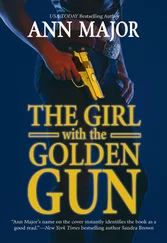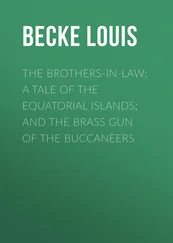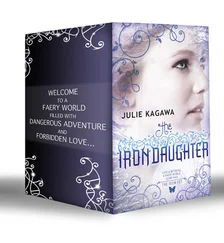Even bomb investigators, the people who most often encounter the fruits of the violence-industry’s advice, oppose banning such books. “You can’t say they can’t print this stuff,” said Joe Grubisic, commander of the Chicago bomb squad. “I don’t like it, but I really don’t know what the solution is. I don’t want a police state.”
No problem would exist, argued Sergeant Stumph of Orange County, if Paladin and its peers simply chose not to publish their violence primers. “It’d be so nice if the big R-word would just come into play, if some of these people would just take responsibility for their friggin’ actions.”
Jack Thompson, a Miami lawyer whom the ACLU picked to be one of its 1992 Arts Censors of the Year, took a less indulgent view. That Paladin can continue to sell a book like Kill Without Joy , he said, is evidence of a lack of prosecutorial initiative. “The ACLU has been very successful in convincing an entire generation of prosecutors that you can’t do anything about this stuff,” he said. The majority of Americans, he argued, want the likes of Paladin Press “aggressively pursued and prosecuted, but they’ve been abandoned because of a lack of will by the government at every level.”
Some books even Paladin will not publish, Lund told me. He will not accept anything racist or “scatological.” He will not publish advice on altitude-sensitive detonation devices. “We don’t want to be the scapegoats for an investigation of an airliner coming down,” he said.
He also said he would not publish books on poisons—although in fact several books in Paladin’s catalog, including Kill Without Joy , include tips on the subject. He countered that these references were very general. “We try to avoid publishing specifics.”
But why this scruple if Paladin’s customers are just Walter Mitty types in search of a psychic release?
Lund tipped back his chair. “Perhaps I can’t tell you accurately,” he said slowly. “I find it very offensive, poisoning. Because it’s something done by the devious, it isn’t a direct-confrontation kind of thing.”
“Bombs are pretty devious,” I suggested.
“We all have our boundaries, wouldn’t you say?” His voice was mild, but his gaze turned perceptibly cooler. “Perhaps my boundaries are different from yours. My boundaries are different from many people’s.”
♦ ♦ ♦
The “aftermarket” bazaar offers far more than mere advice. Dozens of large and small companies peddle all manner of accessories capable of turning your neighborhood bully into a Rambo-esque urban warrior. U.S. Cavalry, a mail-order company in Radcliff, Kentucky, offers “military and adventure equipment,” including laser sights, a “sleeve dagger” meant to be strapped to the user’s arm or leg (complete with “blood grooves” ground into its triangular blade), a plastic hairbrush with a knife embedded in the handle, and all the accessories needed to turn your Mossberg Model 500 shotgun into a tactical assault gun with front and rear “assault grips,” folding stock, and a perforated barrel shroud that gives the weapon the look of an exotic machine gun.
The lushest source of weapons and accessories remains Shotgun News , the thrice-monthly advertising tabloid in Hastings, Nebraska. The front page invariably includes half a dozen ads from companies offering to help people acquire their own federal gun-dealer licenses (“Confused? Call Bob or Jennie today!”). The rest of each issue consists of 150 or more onionskin-like pages of classified and display advertising directed at gun dealers, collectors, and shooters of all tastes. In July 1989 the newspaper carried an advertisement offering the “Whitman Arsenal,” consisting of the seven weapons and accessories that Charles Whitman brought with him on August 1, 1966, when he climbed the twenty-seven-story clock tower at the University of Texas and spent the next ninety minutes firing away at anyone who happened to fall within his sights. He killed sixteen people, including a receptionist and two tourists in the tower; he wounded another thirty-one. The ad offered the guns along with a copy of the Life magazine edition that covered the shooting and called the incident “the most savage one-man rampage in the history of American crime.”
Shotgun News also carried ads placed by an Athens, Georgia, company for products designed to convert semiautomatic weapons to full-auto machine guns, a company later included in ATF’s wide-ranging effort to discover how the Branch Davidian cult in Waco, Texas, managed to acquire enough firepower to repel the 1993 ATF raid on the compound.
When I opened the July 10, 1992, edition of Shotgun News , to which I had subscribed, I found an advertisement for a Nazi tank—“a rare opportunity to own a fine piece of German artillery.” A Chillicothe, Ohio, broker of vintage military vehicles offered the tank for $145,000. “There’s no difference between owning a tank and a Ferrari except four inches of armor,” he told me during a visit to his office. Oddly enough, such ads may be among the most innocent in the publication. Private buyers of tanks tend to be history-loving souls and members of the Military Vehicle Preservation Association, which doesn’t allow live guns of any kind at its various meets.
Once notorious for running quasi-legal and occasionally racist ads, including an advertisement placed by the Ku Klux Klan, Shotgun News has grown more circumspect, at least in terms of its published policies. It now includes a notice that it no longer accepts ads for silencer parts, plans for making explosives and booby traps, “plans, videos or books” for full-auto conversions, and such burglar-friendly tools as lockpicks, slim-jims, and books on how to pick locks. Nonetheless, my April 1993 issue contained an advertisement from a Sun City, Arizona, company offering instructions for converting Chinese SKS semiautomatic assault rifles to full-auto operation. Another company, Jonathan Arthur Ciener Inc. of Cape Canaveral, Florida, “Manufacturer of the Finest in Suppressed Firearms,” ran a full-page ad offering sound-suppressed handguns and rifles, and separate silencers for a variety of assault weapons including the MAC-10 and MAC-11 and Nicholas Elliot’s gun, the Cobray M11/9.
During a reporting journey unrelated to guns, I inadvertently wound up at the fountainhead of aftermarket suppliers, the huge annual “surplus” show in Las Vegas, also the source of much of the cheap merchandise we encounter in “dollar” and Army-Navy stores and in low-rung direct-mail catalogs. Some thirty thousand retailers from around the world visited the show, shopping its four thousand booths for bargains in bulk quantities of those ubiquitous purple-haired trolls, cheap plastic toys, and other merchandise. But I found dozens of dealers selling a darker sort of merchandise, including surplus night-vision scopes like the one used by the serial killer in the movie Silence of the Lambs , dummy hand grenades, combat knives, police badges, and black caps emblazoned with the law-enforcement acronyms we see routinely in newspaper photographs of raids conducted by ATF, DEA, and the FBI. “It’s perfectly legal,” an attendant at one of the cap booths told me. These caps and badges, along with the magnetic blue or red police-style flashing lights offered in U.S. Cavalry’s catalog, can turn anyone into a convincing replica of a bona fide lawman.
At one of the largest booths at the Las Vegas show I encountered Jim Moore, chief executive officer of Military Supply Corp., LaCenter, Washington, who told me he sold uniforms and other equipment to armies around the world. He was also selling .50-caliber long-range sniper rifles. In fact, he said, he had one up in his room at the Las Vegas Hilton at that very moment. He flipped to a page in his catalog that contained a sketch of the bipod-mounted rifle. “It’s called reach out and touch someone at two thousand yards,” Moore said. “Would you like to come out and shoot it?”
Читать дальше
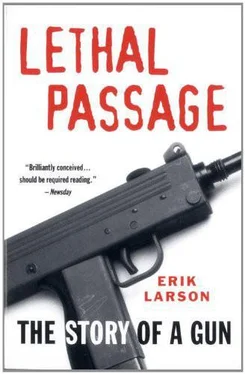
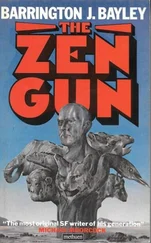
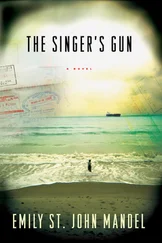

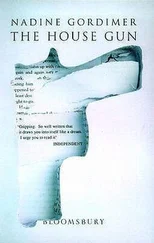

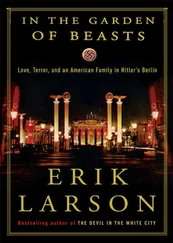

![Ричард Деминг - Whistle Past the Graveyard [= Give the Girl a Gun]](/books/412176/richard-deming-whistle-past-the-graveyard-give-t-thumb.webp)
